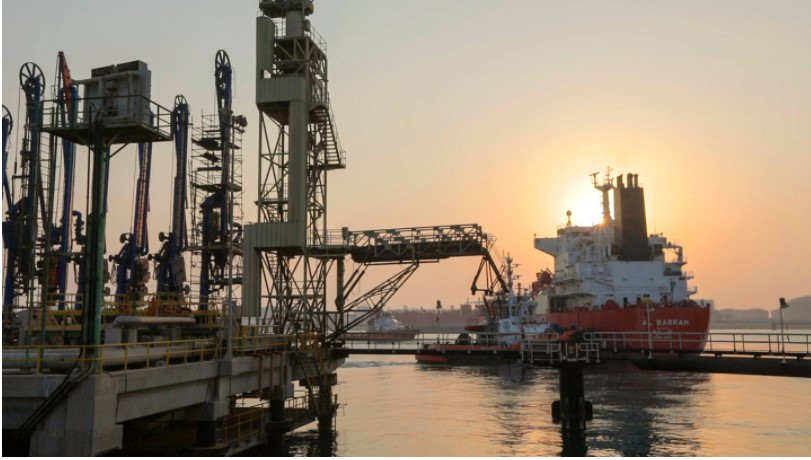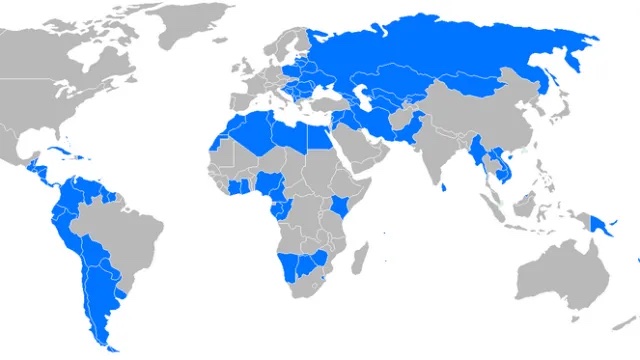As a portfolio manager with an eye on the emerging and frontier economies, Asha Mehta has what many would say is an insider view on what global investors are seeing and thinking as they source opportunities–not just alpha–in markets not necessarily making major headlines. The BRIC nations–Brazil, Russia, India, and China–still garner much attention, but many others, including Nigeria, Egypt, Argentina to name a few, are no less relevant in the eyes of those who see an opportunity within smaller and newly evolving markets. 
Mehta, a CFA charter member, is a lead portfolio manager with Boston-based Acadian Asset Management. A Goldman Sachs alumna, Mehta’s work today is focused on quant strategies with a thematic focus on the emerging and developing economies. Sustainability, which she explains arises more and more these days in investor conversations, is also an area she and a team at Acadian are focused on.
Her focus on the frontier economies has taken her around the globe and not only for client requests. Having carried out microfinance work in India (where she traces family roots), she holds a keen perspective on developing economies and the unique and often dynamic situations present in many of them.
With an MBA from The Wharton School (University of Pennsylvania), Mehta is keen on financial literacy and is today active in numerous organizations that seek to educate and empower women. Girls Who Invest and 100 Women In Hedge Funds are a few of the organizations she uses as a forum to leverage her unique investing skills to a broader demographic.
Asha sat down with me earlier this year to discuss emerging markets and where, in a period of slowing growth and rising global debt, the opportunities may be. She has become well-known as a go-to expert not only for razor-sharp quant strategy but as plugged in portfolio manager with her ear to the ground across the frontier markets. She touched on her upbringing, what drives her and her work, and the ongoing allure of the markets that today many still shy away from.
What keeps you so interested in the frontier markets and why?
Frontier and emerging economies have transformed in recent decades with vast improvements in not only economic measures but human development ones as well. Global integration has driven this development, and it’s been a lifelong ambition of mine to be part of the change.
My maternal and paternal families came to the US from various impoverished countries (India, Russia and beyond). They escaped both violence and poverty and came to the US for stability and opportunity. As a child, I traveled often to my father’s home in rural India. I did my first solo trip there at age 4, where I learned to sleep on outdoor cots on dusty summer nights, eat naan bread cooked on an open fire, and learn customs by attending school alongside my cousins.
At the age of 10, on a return journey, I was struck by the advantages my US upbringing afforded me with my rickshaw driver, who while hauling my large family and our suitcases through poorly-lit gravel paths, let me know that he, too, was ten years old. Following that, in my academic programs at Stanford and Wharton, I studied International Development.
As today’s frontier countries emerge, I find it both fascinating and rewarding to participate in their development. I see the public markets as a vehicle to drive capital to a well-run business, to encourage transparency and accountability, and to fairly and efficiently distribute wealth. In addition, as these markets liberalize and attract investment, they offer a very compelling opportunity for international investors.
What makes Acadian unique?
Acadian is a pioneer in public markets investing. We were early entrants into the emerging market and non-US small-cap stocks decades ago. I joined the firm in 2007, at which point we were the first to launch an institutional Frontier strategy. We have been on the leading edge (sometimes the bleeding edge) since in accessing remote, less-trafficked markets. More recently, we were early to launch a China-A strategy that invests across the entire onshore market.
Acadian is also unique because of our systematic investment approach. While we invest in stocks with strong fundamentals like other traditional managers, we apply our insights through a quantitative lens. This model-driven approach enables us to cover 40,000 stocks across the globe and into the frontier.
Along with breadth, our approach also affords buy-sell discipline in these retail-driven, volatile markets; our inherent multi-factor analysis accounts for frontier risk drivers like country-specific themes and high transaction costs that result from characteristically low liquidity.
Do you find it difficult when discussing these markets with investors? What’s the pitch?
Frontier markets have emerged as an investable asset class for several reasons: improved economic stability resulting from lessons learned from emerging markets’ crises, the formation of the WTO that broke down global barriers and supported trade, and the emergence of the communication age that allows analysts, traders, and PMs to communicate with each other within seconds.
Many global investors approach frontier markets with excitement for their exotic qualities–they are intrigued by the potential of these rapidly growing countries with large populations that are increasingly educated and integrated and that offer a demographic dividend with a growing consumer class. Vietnam is a case example, with a strong economy supported by both growing domestic demand and foreign direct investment (FDI). It is important to note that with these more nascent markets comes heightened volatility as a result of issues such as perceived corruption, autocracy and regulatory intervention – These can sometimes dissuade investors from investing in frontier markets.
Acadian is also unique because of our systematic investment approach. While we invest in stocks with strong fundamentals like other traditional managers, we apply our insights through a quantitative lens.
Ultimately, investors who allocate to this asset class believe these markets can offer meaningful opportunities from both a beta and an alpha standpoint. Beta-wise, the markets will grow via earnings expansion (capitalizing on domestic demand and global free trade), multiple expansion, and capital deepening.
Active management can seek to further deliver possible outsized returns given the inefficiency of these markets. Further, we can potentially deliver a lower volatility profile as country risks are idiosyncratic and offer offsetting effects in a diversified portfolio. While corruption and governance are a concern, we find that frontier markets, perhaps surprisingly, score no worse than their emerging market peers.
Have you seen investor interest remain the same or dip or rise over the years? What do you think keeps global investors interested in these markets?
Investor interest has risen substantially since the formation of the asset class a decade ago and stabilized more recently. As many investors are looking to go passive in their portfolios, frontier markets investing may offer a particularly inefficient asset class where active management may be able to generate net-of-benchmark active returns.
Also because frontier market drivers are distinct from those in the more mainstream markets, the frontier return profile is less correlated to developed and emerging markets; this provides diversification in a broad asset allocation plan.

Going forward, frontier markets are going through an evolution, as many large markets have been upgraded to ‘EM’ status. These countries include UAE, Qatar, Pakistan, Argentina, and Saudi Arabia. The markets that are left outside of Developed and Emerging Market indices constitute a very small portion of investable markets.
Given this, investors will be re-defining how they characterize a frontier market to likely include small emerging market countries. While this classification may generate some confusion for benchmark-sensitive investors, it is likely that the core characteristics (growth, inefficiency, uncorrelated return) will remain.
What do you believe is the long-term appeal of frontier markets such as Vietnam, Mozambique, and some Gulf states?
These countries have both short-term and long-term opportunities.
In the nearest term, our outlook for Saudi Arabia in H1 2019 is very strong. The country has liberalized substantially over the last few years as it targets its Vision 2030. For the first time, Saudi will be included in mainstream emerging market benchmarks in 2019. Passive and active equity investors will increase their exposures as a result, resulting in substantial market appreciation opportunity.
Likewise, we see a meaningful opportunity for Vietnam to benefit from global flows as its economy develops. This country is a darling of the Frontier Markets, given rapid growth, limited sociopolitical risk, and economic orientation. Further, the market is both broad and deep, providing an attractive environment for active stock picking.
Mozambique is a longer-term story. The country has significant growth potential over the long-term but is still in the early stages of its emergence. It remains nearly uninvestable given limited breadth and liquidity.
Around Frontier Markets, Select Opportunity Exists
More than a dozen African countries are scheduled to hold elections this year. What risks do you see on the continent?
Our long term outlook for Africa is positive, but over the next year, key risks relate to macroeconomic considerations. In West Africa, the largest investable market is Nigeria, where elections are now complete, despite sociopolitical risk particularly around the voting delay, currently, the key risk relates to oil, both the price itself as well as whether there will be production disruptions as well as the price of oil.
In East Africa, we continue to be concerned about Zimbabwe’s newly established currency and the country’s capital controls. While Kenya’s private sector is thriving, we are concerned about high valuations in this low liquidity market as well as the unfavorable regulatory environment for the financial sector. In both countries, the central bank will play a significant role in transitioning these countries toward the next wave of growth.
South Africas’s May election is on the horizon. What should investors be ready for? Are there risks surrounding an ANC fracture or Ramaphosa loss?
We anticipate volatility in the upcoming South Africa election. While a Ramaphosa victory would offer the President a mandate to enact the reforms and structural changes that the economy needs, the South African economy remains weak. We find few positive drivers of return, given the weak macro environment, slow growth among South African corporates, meaningful volatility, and potential for a credit downgrade. A Ramaphosa loss or ANC fracture would introduce additional uncertainty and risk.
Among the other countries that will be voting this year, where do you see the most opportunity for global investors?
With Nigeria’s election behind them, we do see some risks. However, Nigeria is among the more liquid African markets, and there are technical drivers that could lead a rally in the second half of this year. For example, the country’s risk profile has driven valuations to quite attractive levels, with many Frontier countries “graduating” from the frontier benchmark to emerging. Longer-term, investors will be watching the impact of President Buhari’s anti-corruption initiatives enacted in his prior term. While these efforts have had a modest impact recently, an improving transparency backdrop would be beneficial as corporates return to growth.
Short-term and long-term, are any of the countries on the [African] continent a good bet this year?
We believe North Africa broadly is poised for a potential opportunity. Our view is driven by both technical elements, including the coming liquidity rotation among international investors, and fundamental considerations, as we believe Egypt is competitive in the current macro environment and Morocco offers exposure to what we believe to be high-quality companies.
Illustration: Alexandra Compain-Tissier, Paris








